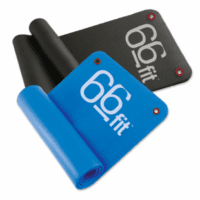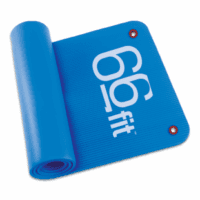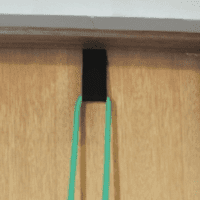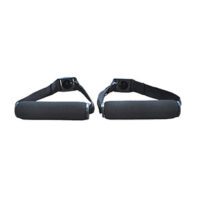Overuse Injuries
Article by John Miller

What is an Overuse Injury?
Overuse injuries refer to injuries sustained from a repeated action (such as repetitive strain injury) instead of acute injuries, which occur in an instant (such as a sprained ankle).
Overuse Injuries Can Occur to the Following Structures:
- Tendons: tendinopathies
- Muscle-tendon structures (e.g. tennis elbow)
- Soft tissue compartments (e.g. compartment syndrome)
- Periosteum cartilage, which is the covering of the bone (e.g. shin splints)
- Bursa (e.g. bursitis)
- Nerve tissue (e.g. neural mechanosensitivity)
- Bone (e.g. stress fractures).
Exercise applies stress to the body. Your body adapts by thickening and strengthening the various tissues involved. Hence, muscles get stronger, firmer and sometimes larger, tendons get stronger and bone density increases.
However, if exercise is applied so that adaptation cannot occur, the excessive overload can cause microscopic injuries, leading to inflammation, which is the body’s response to injury.
Signs of Overuse or Inflammation include:
- Swelling (which may be unnoticeable)
- Warmth to the touch
- Redness
- Impaired function of the part.
All of these signs may be present but not noticeable in the beginning stages. Often the first sign may be stiffness or soreness (especially in the morning), which may disappear with a warm-up. Continued use may cause continued damage, and the pain will last through, and past warm-up and maybe even worse after an activity is finished.
The Four Stages of an Overuse Injury:
- The discomfort disappears during warm-up.
- The discomfort may disappear during warm-up but reappears at the end of an activity.
- Discomfort that gets worse during the activity
- Pain or discomfort all the time.
In stage one, injury identification and treatment allow continuing activity as long as the injury does not worsen.
A stage 2, the activity may continue at a modified pain-free level while being treated. Treatment must continue until completely healed.
If the injury progresses to stage 3, the activity must immediately cease. The supervising physiotherapist will allow a return to action after identifying the cause, and you are completely symptom-free. Competitive athletes, depending on the individual circumstances, may return to activity.
If the injury progresses to stage 3, the activity must immediately cease. The supervising physiotherapist will allow a return to action after identifying the cause, and you are completely symptom-free. Competitive athletes, depending on the individual circumstances, may return to activity with stage 1 symptoms.
What Causes Overuse Injuries?
- Lack of appropriate muscle strength or endurance
- Poor core stability
- Muscle imbalance (strong, tight muscles versus weak stretched muscles)
- Inflexibility
- Malalignment or Biomechanical issues (e.g. flat foot, squinting patellae)
- Training errors
- Faulty technique
- Incorrect equipment.
By far, the most common cause of overuse injury is training errors. Moreover, the most common error is “too much, too soon”.
How to Prevent an Overuse Injury
We can prevent overuse syndromes. Some of the ways to prevent this injury include:
- Warm-up (including stretching) and warm-down (including stretching) before and after all exercise.
- Use proper equipment (e.g. jogging shoes for jogging, a racquet that is the right size with the proper grip size and strings strung to your level of play).
- Increase at a faster rate than 10% increase per week (distance, speed, weight, etc.).
- Practice and concentrate on the correct technique.
- Condition yourself for 2-3 weeks before starting – strength and flexibility.
- Listen to your body – pain is a warning that something is wrong. Early identification and treatment will allow you to continue your activity.
- Identify and correct the cause of pain or discomfort.
- Ensure full injury rehabilitation, e.g. a sore right leg can cause an overuse injury in the left through compensation.
Common Treatments for Overuse Injuries
The two most important steps in the management of overuse (inflammation) injury are:
- Remove cause
- Reduce inflammation
- Carefully return to activity as the symptoms dictate.
Professional assessment and guidance are highly recommended for overuse injuries. Not only are you repairing acute symptoms you are also aiming to avoid its recurrence once your training resumes.
Rochedale - Call 38410277
Book Online: RochedaleSalisbury - Call 32751044
Book Online: SalisburySandgate - Call 32691122
Book Online: SandgateCommon Tendinopathies
An Overview of Tendon Injuries
Tendinopathies affect individuals across various age groups and physical activities, and these prevalent musculoskeletal conditions cause pain and impaired function, significantly impacting the quality of life. Active individuals, including athletes and those engaged in repetitive occupational tasks, are particularly susceptible to these overuse injuries.
This article aims to provide a comprehensive overview of common tendinopathies, focusing on their specific manifestations and management approaches. By exploring the intricate details of conditions ranging from Achilles Tendinopathy to de Quervain's Tenosynovitis, we aim to enhance understanding and promote effective treatment strategies for those affected.
Tendinitis vs Tendinopathy
It's important to note that "tendinitis" is often used interchangeably with tendinopathy, but the suffix "-itis" implies inflammation, which is not always present in tendinopathies. In many cases, the condition involves degeneration of the tendon rather than acute inflammation. As a result, the more accurate term used nowadays is "tendinopathy."
Tendinopathy Treatments
Treatment approaches for tendinopathies typically focus on managing pain, promoting healing, and addressing contributing factors (e.g., overuse, improper biomechanics). Additionally, treatment approaches have advanced to include more targeted therapies, such as eccentric exercises, physiotherapy, and sometimes regenerative medicine techniques, depending on the specific type and severity of the tendinopathy.
Tendinopathy Classifications
Tendinopathy classifications have evolved to encompass a more nuanced understanding of these conditions. The modern tendinopathy classifications now include the following:
- Tendinitis or Tendonitis is an acute tendon inflammation, usually resulting from overuse, injury, or repetitive strain. It involves the active inflammatory process, and the symptoms can include pain, swelling, and limited range of motion.
- Tendinosis is a chronic degenerative condition of the tendon that occurs when repetitive micro-injuries do not have sufficient time to heal and repair properly. Unlike tendinitis, tendinosis does not primarily involve active inflammation. Instead, it is associated with a breakdown of collagen fibres within the tendon, leading to its structure and composition changes.
- Paratendonitis and Tenosynovitis: These conditions involve inflammation or irritation of the paratendon (the outer layer of the tendon) or the tenosynovium (the sheath surrounding certain tendons). Paratendonitis and tenosynovitis can lead to pain and limited function of the affected tendon and are often associated with repetitive motions or friction.
- Insertional Tendinopathy: This type of tendinopathy occurs at the point where the tendon attaches to the bone (the insertion site). It can involve inflammation, degeneration, or a combination of both at the tendon-bone interface.
- Mid-Substance Tendinopathy: Mid-substance tendinopathy refers to conditions affecting the central portion of the tendon rather than the attachment points. This tendinopathy is often related to chronic overuse and may involve changes in the tendon's structure without significant inflammation.
It's important to note that the classification and understanding of tendinopathies continue to evolve with ongoing research. If you suspect you have tendinopathy, it's best to seek evaluation and advice from a healthcare professional, such as your physiotherapist, who is experienced in tendon conditions.
Seeking Professional Advice
Consult a physiotherapist with a special interest in tendinopathies for personalised advice and treatment.
Specific Tendinopathies
Foot & Ankle
- Achilles Tendinopathy
- Achilles Tendon Rupture
- FHL Tendinopathy
- Peroneal Tendinopathy
- Tibialis Posterior Tendinopathy
Knee
Hip & Groin
Shoulder
Elbow
Wrist & Hand
Conclusion
Tendinopathy is a complex condition requiring careful diagnosis, treatment, and management. Understanding its phases, symptoms, and treatment options is vital for effective recovery.
What to Do?
If you suspect tendinopathy, consult a physiotherapist for a thorough assessment and tailored treatment plan. Remember, early intervention can significantly improve your prognosis and hasten recovery.
Rochedale - Call 38410277
Book Online: RochedaleSalisbury - Call 32751044
Book Online: SalisburySandgate - Call 32691122
Book Online: SandgateRelated Articles
- Tendinopathy: Causes, Symptoms, And Effective Treatments - Discover a broad overview of tendinopathies, including causes, symptoms, and a variety of effective treatment options.
- Effective Tendinopathy Physiotherapy Treatment Strategies - Explore advanced physiotherapy treatment strategies for managing tendinopathies effectively.
- Biceps Tendinopathy: Causes, Symptoms, And Treatments - Gain insights into the specific causes, symptoms, and treatment options for biceps tendinopathy.
- Gluteal Tendinopathy: Causes, Symptoms, And Treatment - Learn about gluteal tendinopathy, its impact, causes, symptoms, and how it can be treated.
- Rotator Cuff Tendinopathy - Understand the specifics of rotator cuff tendinopathy, including its causes, symptoms, and various treatment methods.
- Proximal Hamstring Tendinopathy - Find detailed information on proximal hamstring tendinopathy, including prevention and treatment strategies.
- Peroneal Tendinopathy - We discuss the causes, symptoms, and rehabilitation processes for peroneal tendinopathy, and how to return to sports safely.
- Wrist Tendinopathy - Uncover the range of treatment options for wrist tendinopathy, from early injury treatment to physiotherapy modalities.
- Hip Adductor Tendinopathy - Effective Physio Solutions - Explore the causes, symptoms, and physiotherapy solutions for hip adductor tendinopathy.











































































